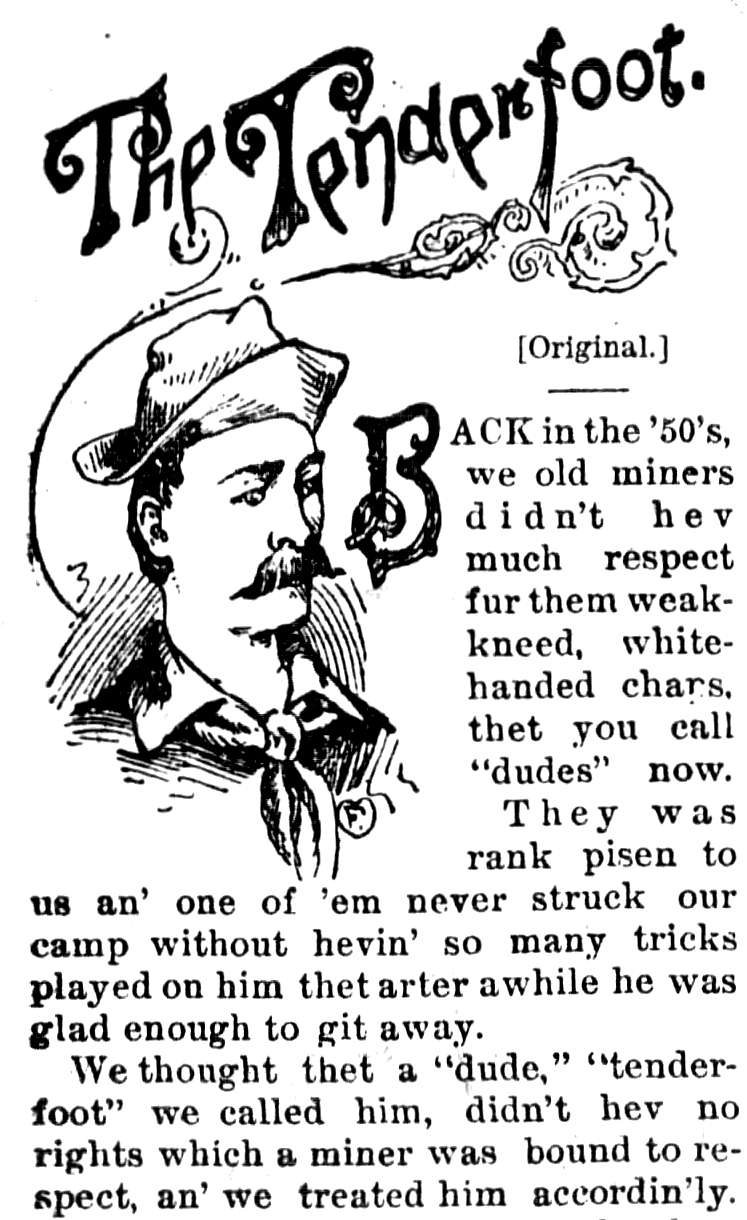On December 19, 1891, an editor at the A. N. Kellogg Newspaper Company in Chicago sent a telegram to Paul Laurence Dunbar in Dayton about some manuscripts he had submitted. Paul was nineteen years old and a recent high school graduate.
We do not buy original poetry nor short stories at any time unless by special arrangement. We will, however, take your short story "The Tenderfoot" and allow you $6 for the same if that is satisfactory to you.
A. N. Kellogg Newspaper Company to Paul Laurence Dunbar, December 19, 1891. Paul Laurence Dunbar Papers, Ohio History Connection (Microfilm edition, Roll 1).
Although Paul's poems and stories had been published before, this was the first time he received payment for his writing. A. N. Kellogg was not a literary publisher. The company specialized in typesetting and stock images (called "cuts"), but Kellogg also syndicated short stories in newspapers around the country. The stories were often serialized, so readers had to buy several papers to find out the ending.
Job Electrotyping and Stereotyping of the Highest Grade Promptly Executed by A. N. Kellogg Newspaper Co. We offer to our Customers and The Trade generally the most satisfactory work possible. Our facilities enable us to turn out work very rapidly. We make a specialty of Newspaper Headings and Cuts, and have the largest assortment in these lines to be found anywhere in the country from which to select.
Advertisement. Paxton Record (Paxton, Illinois). September 24, 1891. Page 6.
Paul's short story "The Tenderfoot," told in Western dialect, is about rivalry among workmen in a California mining town. In early 1892, "The Tenderfoot" appeared in newspapers in locations such as Alabama, Iowa, Kansas, Michigan and Oklahoma. Attributed to "Paul L. Dunbar," it was illustrated with drawings of men on horseback wearing Western clothing.
When the meal was about half over, Jerry Malcom came a tiptoein' in like he was afraid he'd wake hisself, an' said kind o' low like: "He's a comin', fellers." Every eye turned toward the door. It opened sort o' quick like an' in stepped our man. Wall, we'd all been kind o' holden' our breath, an' all of a sudden we let it go with a gasp. Man alive! There was six foot of as good a man in that tenderfoot's clothes as ever I seen.
Excerpt from "The Tenderfoot," by Paul Laurence Dunbar (1891).

Illustration from "The Tenderfoot," by Paul Laurence Dunbar. The Republic City News (Republic City, Kansas). February 12, 1892. Page 6.
Years later, two of Paul's acquaintances recalled how significant the publication of "The Tenderfoot" was to its nineteen-year-old author.
Paul was always encouraged by his mother, who firmly believed there was a great future in store for him. Amid the greatest difficulties he pursued his education, and continued to court the muses, but it was not until 1891 that his work began to attract general attention. Early in that year he wrote a western dialect story called "The Tenderfoot." He sent it to the A. N. Kellogg syndicate in Chicago, and it was accepted and published shortly afterward. The story made a decided hit, and it was extensively copied. It was the first literary production that any syndicate in the United States had ever published for a colored man. Subsequently the firm accepted other of the young author's stories.
"Writes Good Verse," by James D. Corrothers. Unidentified newspaper clipping [Chicago, Illinois. December 19, 1895]. Paul Laurence Dunbar collection, New York Public Library, Schomburg Center for Research in Black Culture (Microfilm edition, Roll 3).
I knew Paul Laurence Dunbar as a boy, when he attained some local distinction by writing class poems and sundry articles for the High School Times. One day I found that he was trying his hand on a class of literature I did not suspect he had any fancy for: wild west stories. He found there was a market for such stories with a Chicago firm, but a pitiful market it was. After writing for days on a story he would send it in for acceptance and the manuscript would sometimes be returned with the request to "cut it down, one-half," or to a certain number of words. Then he would laboriously go over the whole thing, send in the revised manuscript and receive perhaps $3. That was exasperating to the last degree, and I wondered how he could stand it. But he kept on, hoping that finally his merits would be recognized.
"Birth Anniversary Recalls Early Life of the Noted Poet," by Judge C. W. Dustin. The Dayton Forum (Dayton, Ohio). July 5, 1918.
